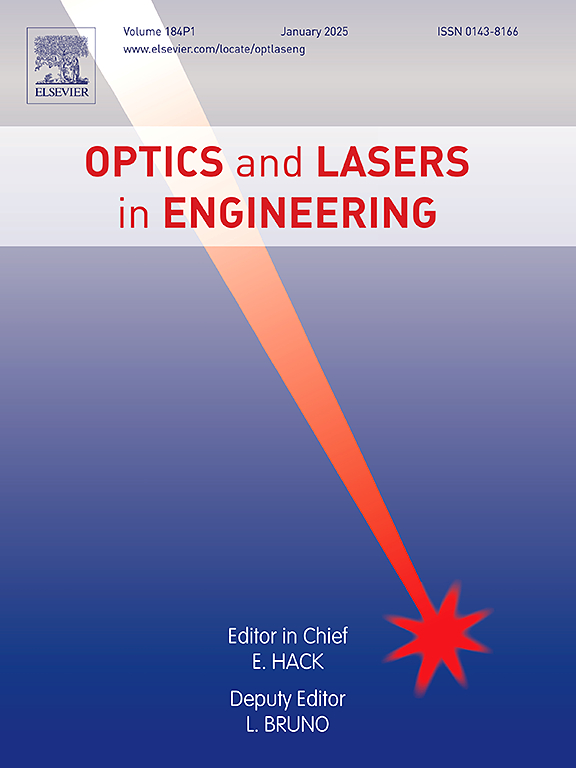Reconstruction of moving small targets through scattering media: A hierarchical network approach integrating event information
IF 3.5
2区 工程技术
Q2 OPTICS
引用次数: 0
Abstract
Optical scattering presents substantial challenges for imaging systems across various domains, significantly complicating the acquisition of target information. Existing techniques for imaging through scattering media primarily address static targets. However, continuously moving targets will introduce motion blur into the speckle image, thus severely affecting the reconstruction quality. To address this problem, we innovatively introduce an event camera and propose a two-stage speckle reconstruction network (TSR-Net), which effectively integrates speckle and event information. TSR-Net first deblurs speckle images in its first stage, followed by reconstructing moving targets from the refined speckle images in the second stage. Event data is leveraged throughout the reconstruction process, being extracted and fused at multiple levels to enhance the backbone network's performance in deblurring and reconstruction, thereby guiding training more effectively. The dedicated datasets of speckle images were collected and processed to evaluate our approach. Experimental results highlight the superior reconstruction performance of the proposed method, especially for small pixel-level objects in continuous motion.
基于散射介质的运动小目标重建:一种整合事件信息的分层网络方法
光学散射给成像系统带来了巨大的挑战,使目标信息的获取变得非常复杂。现有的散射介质成像技术主要针对静态目标。然而,连续运动的目标会在散斑图像中引入运动模糊,严重影响重建质量。为了解决这一问题,我们创新性地引入了事件相机,并提出了一种两阶段散斑重建网络(TSR-Net),有效地整合了散斑和事件信息。TSR-Net首先在第一阶段对散斑图像进行去模糊处理,然后在第二阶段对细化后的散斑图像进行运动目标重建。在整个重建过程中利用事件数据,对事件数据进行多层次的提取和融合,增强骨干网去模糊和重建的性能,从而更有效地指导训练。收集了专门的散斑图像数据集,并对其进行了处理,以评估我们的方法。实验结果表明,该方法具有良好的重建性能,特别是对于连续运动的小像素级目标。
本文章由计算机程序翻译,如有差异,请以英文原文为准。
求助全文
约1分钟内获得全文
求助全文
来源期刊

Optics and Lasers in Engineering
工程技术-光学
CiteScore
8.90
自引率
8.70%
发文量
384
审稿时长
42 days
期刊介绍:
Optics and Lasers in Engineering aims at providing an international forum for the interchange of information on the development of optical techniques and laser technology in engineering. Emphasis is placed on contributions targeted at the practical use of methods and devices, the development and enhancement of solutions and new theoretical concepts for experimental methods.
Optics and Lasers in Engineering reflects the main areas in which optical methods are being used and developed for an engineering environment. Manuscripts should offer clear evidence of novelty and significance. Papers focusing on parameter optimization or computational issues are not suitable. Similarly, papers focussed on an application rather than the optical method fall outside the journal''s scope. The scope of the journal is defined to include the following:
-Optical Metrology-
Optical Methods for 3D visualization and virtual engineering-
Optical Techniques for Microsystems-
Imaging, Microscopy and Adaptive Optics-
Computational Imaging-
Laser methods in manufacturing-
Integrated optical and photonic sensors-
Optics and Photonics in Life Science-
Hyperspectral and spectroscopic methods-
Infrared and Terahertz techniques
 求助内容:
求助内容: 应助结果提醒方式:
应助结果提醒方式:


